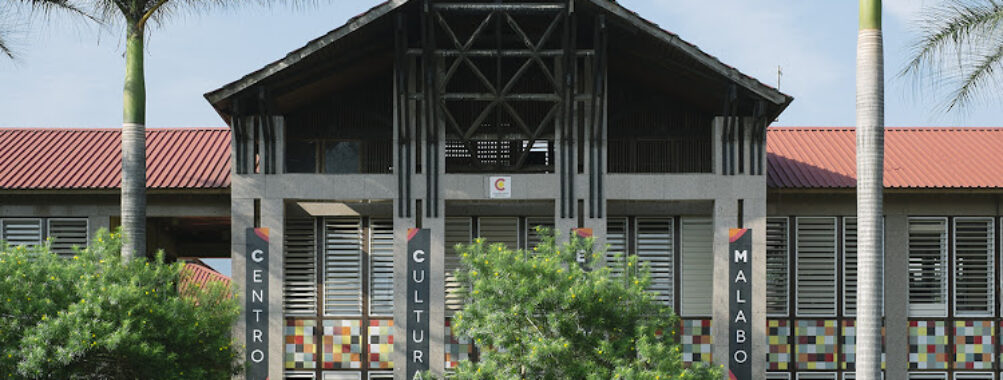
España Cultural
“`html
Table of Contents
Description
España Cultural in Malabo is one of those places that quietly surprises you. It’s not just a cultural center—it’s a space where Spanish heritage and Equatorial Guinean spirit mingle in a way that feels genuine, not forced. The moment someone steps in, they’ll notice the subtle aroma of Spanish cuisine drifting from the restaurant, the faint hum of conversation in multiple languages, and a sense that this place is more than a tourist stop—it’s a living, breathing hub of connection.
The center’s architecture has an understated elegance—whitewashed walls, open courtyards, and warm terracotta tones that catch the light beautifully in the late afternoon. Inside, exhibitions rotate regularly, from Spanish art retrospectives to local crafts that tell the story of Equatorial Guinea’s evolving identity. There’s often a photography show tucked into one corner or a small concert happening in another, and if you’re lucky, you might stumble into a flamenco performance that feels spontaneous and raw.
It’s not perfect, of course. Sometimes the service at the restaurant runs on island time, and occasionally an exhibit might feel a bit dated. But there’s a charm to that too—it’s real, unpolished, and human. Visitors often linger longer than they plan to, chatting with staff who are genuinely passionate about what they do. It’s the kind of place that reminds you that cultural exchange isn’t about grand gestures—it’s about small, meaningful moments shared over tapas or a cup of strong coffee.
Key Features
- Authentic Spanish restaurant serving traditional dishes like paella, tortilla española, and churros
- Regular cultural events including film screenings, art exhibitions, and live music performances
- Educational programs promoting Spanish language and culture
- Wheelchair accessible entrance, restrooms, and parking area
- Free parking available both on-site and on nearby streets
- Friendly staff eager to share insights about Spanish and local traditions
- Peaceful courtyard ideal for relaxing between activities
Best Time to Visit
If there’s one thing to know about visiting España Cultural, it’s that timing can shape your entire experience. The center is lively year-round, but the best time to visit is during the cooler months—roughly from June to September—when the air feels lighter and outdoor events are more frequent. During this season, the cultural calendar tends to fill up with film festivals, music nights, and Spanish holiday celebrations that spill into the courtyard with laughter and dance.
Evenings are particularly magical. The sun sets slowly, casting a warm glow over the building’s facade, and the restaurant lights flicker on as people gather for dinner. If you’re the kind of traveler who loves mingling with locals and expats, this is when you’ll find the most energy. On the other hand, mornings are perfect for a quieter visit—ideal for exploring the exhibits or enjoying a coffee while reading in the shaded patio.
How to Get There
Getting to España Cultural is fairly straightforward. It’s located conveniently near Malabo’s main routes, making it accessible by taxi or private car. Most drivers in the city know the place well—it’s something of a local landmark—so even if your Spanish isn’t perfect, just mentioning the name will likely get you there without much trouble.
For those driving, there’s free parking available both in a designated lot and along the nearby streets. The area is generally safe and easy to navigate, though traffic can get a little unpredictable during rush hour. If you prefer a more relaxed journey, consider visiting mid-morning or late afternoon when the roads are calmer and the light is perfect for photos.
Tips for Visiting
Here’s where things get personal. Having spent a few afternoons wandering through España Cultural, I’ve picked up a few small lessons that might make your visit smoother—and maybe a bit more memorable. First, give yourself time. It’s tempting to pop in for a quick look, but this place rewards the slow traveler. Sit down, order a coffee, and let the rhythm of the place sink in. You’ll probably end up chatting with someone interesting—maybe a local artist or a Spanish teacher who’s been here for years.
Second, check the event schedule before you go. The center often hosts themed nights or workshops that aren’t widely advertised but are well worth attending. There was one evening I stumbled into a Spanish poetry reading—half in Spanish, half in Fang—and it turned into one of those moments that stick with you long after you’ve left.
Third, bring a bit of cash. While the restaurant and main ticket counter usually accept cards, smaller vendors or impromptu stalls sometimes don’t. And if you’re planning to take photos, just be respectful—some exhibitions have restrictions to protect the artwork.
Accessibility here is thoughtfully considered, which is something I really appreciate. The wheelchair-accessible entrances and restrooms make it inclusive, and the staff are always willing to help if you need assistance. Families will also find it easy to navigate with strollers or small children.
Lastly, don’t rush off after your visit. Step outside, take a short walk around the nearby area, and watch how daily life unfolds. There’s something grounding about seeing how this cultural center fits into the rhythm of Malabo—a reminder that travel isn’t just about ticking off attractions but about understanding the heartbeat of a place.
España Cultural isn’t flashy, but it’s meaningful. It’s the kind of spot that grows on you the more time you spend there. Whether you’re drawn by the art, the food, or just the quiet joy of discovering a slice of Spain in the heart of Africa, it’s a place that leaves an impression long after you’ve gone. And honestly, that’s what good travel is all about.
“`
Location
Places to Stay Near España Cultural
Find and Book a Tour
Explore More Travel Guides
No reviews found! Be the first to review!